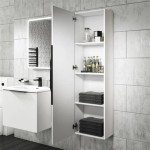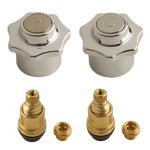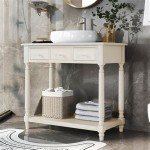Mold Keeps Coming Back In Bathroom: Causes and Solutions
Bathrooms are an inevitable part of our homes and a breeding ground for mold, despite our best efforts to keep them clean and dry. The warm, humid environment provides the perfect conditions for mold to thrive, leading to unsightly and potentially harmful growth. If you're facing the persistent problem of mold reappearing in your bathroom, it's crucial to understand the underlying causes and find effective solutions to prevent its return.
Moisture and Humidity
The primary culprit for mold growth in bathrooms is moisture and humidity. The steam from showers, baths, and sinks creates a humid atmosphere that attracts mold spores. If the bathroom lacks proper ventilation, this moisture can linger and provide a fertile ground for mold development. Ensuring adequate ventilation by installing an exhaust fan or opening windows during and after showers can help reduce humidity levels.
Condensation
Condensation occurs when warm, moist air comes into contact with a cold surface, such as a bathroom mirror or window. This can lead to water droplets forming on these surfaces, providing a perfect environment for mold spores to germinate. To prevent condensation, try to keep the bathroom temperature consistent and avoid excessive humidity by using exhaust fans or dehumidifiers.
Insufficient Cleaning
Mold thrives in dirty and unhygienic environments. Regular cleaning and disinfection are essential to prevent mold growth. Thoroughly clean all surfaces in the bathroom, including the shower, sink, toilet, and floor, using a mold-killing cleaner. Pay particular attention to areas where water tends to accumulate, such as grout lines and shower corners.
Leaky Pipes
Leaking pipes are a major source of excess moisture in bathrooms, leading to mold growth. Inspect pipes and fixtures for any signs of leaks, such as water stains or dripping faucets. Promptly repair any leaks to eliminate the source of moisture and prevent further mold issues.
Materials and Finishes
Certain materials and finishes in bathrooms can contribute to mold growth. For example, porous materials like drywall and wood can absorb moisture and provide a breeding ground for mold. Mold-resistant finishes, such as epoxy paint or tile, are a better choice for bathrooms as they inhibit mold growth.
Eliminating Mold Growth
If mold has already taken hold in your bathroom, it's important to remove it thoroughly to prevent further health problems and damage. Use a mold-killing cleaner and scrub affected surfaces, ensuring you remove all visible mold. Consider using a bleach solution (1 part bleach to 10 parts water) for stubborn mold spots, but always follow the safety instructions carefully.
Prevention is Key
Prevention is the best defense against mold growth in bathrooms. Regular cleaning and proper maintenance are crucial. Keep humidity levels low by using an exhaust fan or dehumidifier, and ensure proper ventilation to allow moisture to escape. Promptly repair any leaks or plumbing issues to eliminate potential moisture sources. By implementing these preventive measures, you can effectively combat mold growth in your bathroom and maintain a healthy and clean environment.

How To Prevent Mold In Bathrooms Forbes Home

How To Get Rid Of Mold In Bathroom 2024 Tips From Puroclean

Detecting And Preventing Mold Growth On Your Bathroom Ceiling Trusscore

Bathroom Mold How To Kill On Ceiling

Black Mold In Shower Is It A Cause Of Worry And What To Do About Aqa

Mold On Bathroom Ceiling How To Remove From Ceilings

Mold In Toilet Prevention And Removal Guide 2024

Killing Preventing Black Mold In The Bathroom

Mold In Shower Bathroom Types Mike Diamond Services

What To Know About Bathroom Mold And When You Should Worry
See Also







